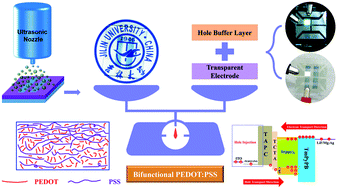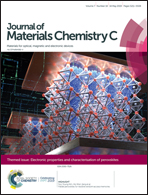Efficient ITO-free organic light-emitting devices with dual-functional PSS-rich PEDOT:PSS electrode by enhancing carrier balance†
Abstract
Organic semiconductors typically show highly asymmetric hole and electron mobilities, with the hole mobility exceeding the electron mobility by orders of magnitude in most cases. Therefore, an extra hole buffer layer is always needed to alleviate the hole injection, complicating the fabrication of organic light-emitting devices (OLEDs). Here, a bifunctional electrode serving as a transparent electrode and hole buffer layer simultaneously is proposed, using highly conductive poly(3,4-ethylenedioxythiophene) polystyrene sulfonate (PEDOT:PSS) films without removing any PSS chains. The existence of a large number of PSS chains makes it possible for the PEDOT:PSS electrode to possess hole buffer functionality. A much better carrier balance can be achieved in the OLEDs based on the dual-functional electrode. Although it is still a challenge to achieve high performance OLEDs based on PEDOT:PSS transparent electrodes, these types of OLEDs, including green and white devices, show excellent luminous efficiency and efficiency roll-off, much better than ITO-based devices. This work provides a route for high performance simple ITO-free OLEDs.

- This article is part of the themed collection: 2019 Journal of Materials Chemistry C Most Popular Articles


 Please wait while we load your content...
Please wait while we load your content...